Abstract
Cells of a strain of Pseudomonas cepacia were isolated from an oil-in-water emulsion containing methyl and propyl p-hydroxybenzoates (methylparaben and propylparaben) as preservative additives. This strain demonstrated the ability to destroy these additives, to utilize the propyl ester as sole carbon source, and to hydrolyze the methyl ester. When the isolate was grown on Eugon agar, exposure to the methyl ester killed 99.9% of the inoculum, but the surviving cells grew logarithmically. On the other hand, cells grown on media containing propylparaben were less susceptible when subsequently exposed to emulsions containing methylparaben. These observations demonstrate one mechanism by which microorganisms develop resistance to antimicrobial preservatives.
Full text
PDF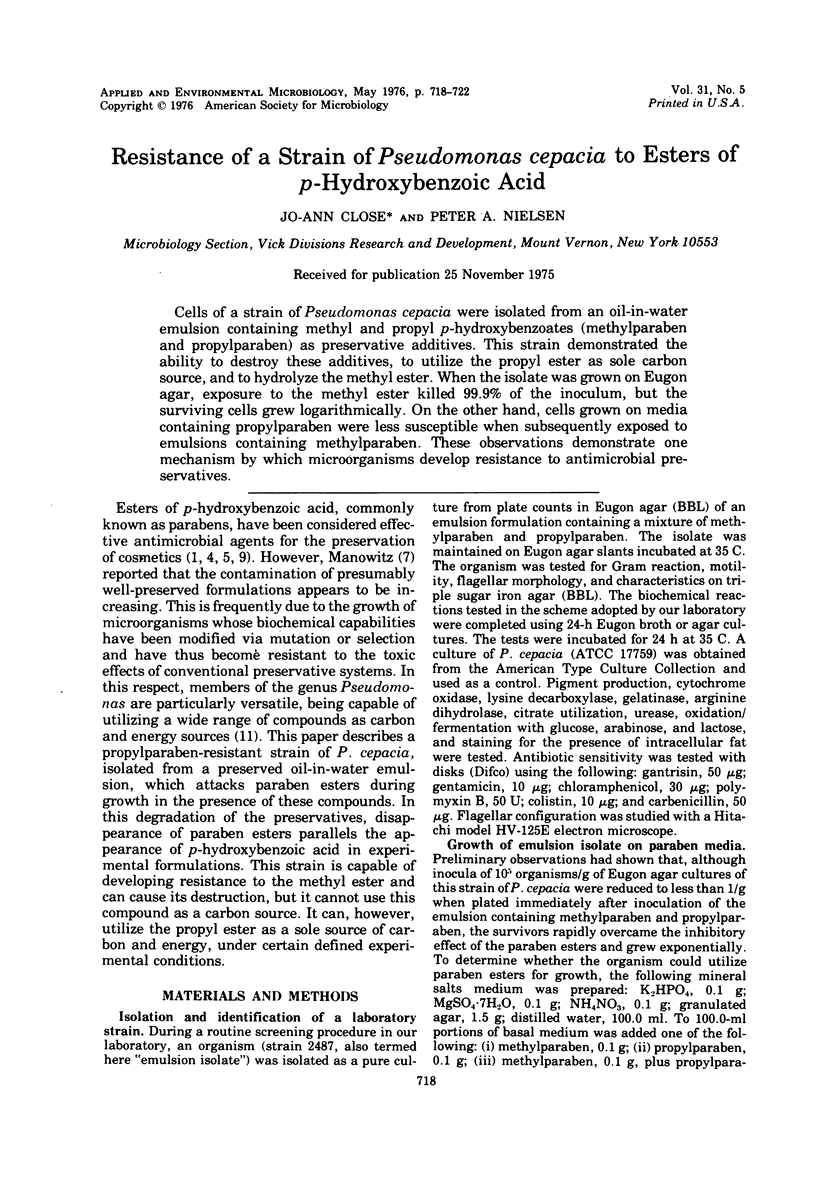
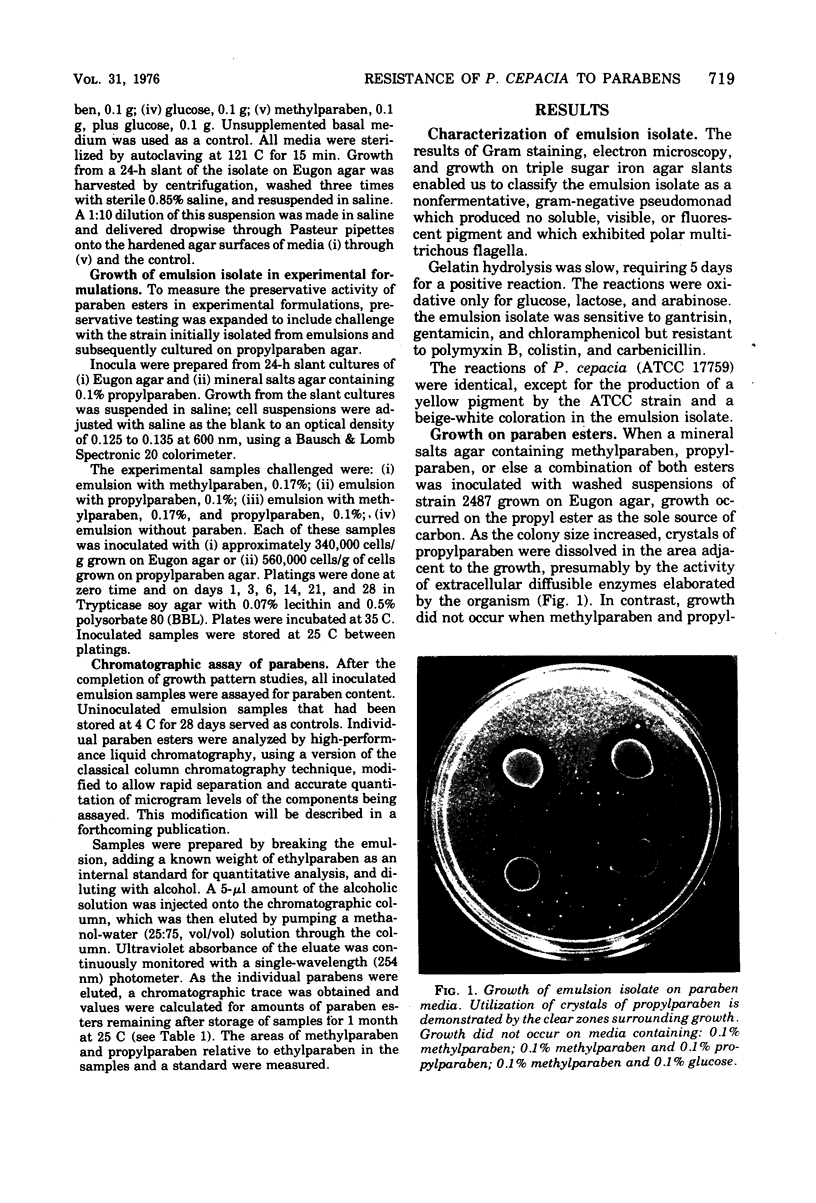
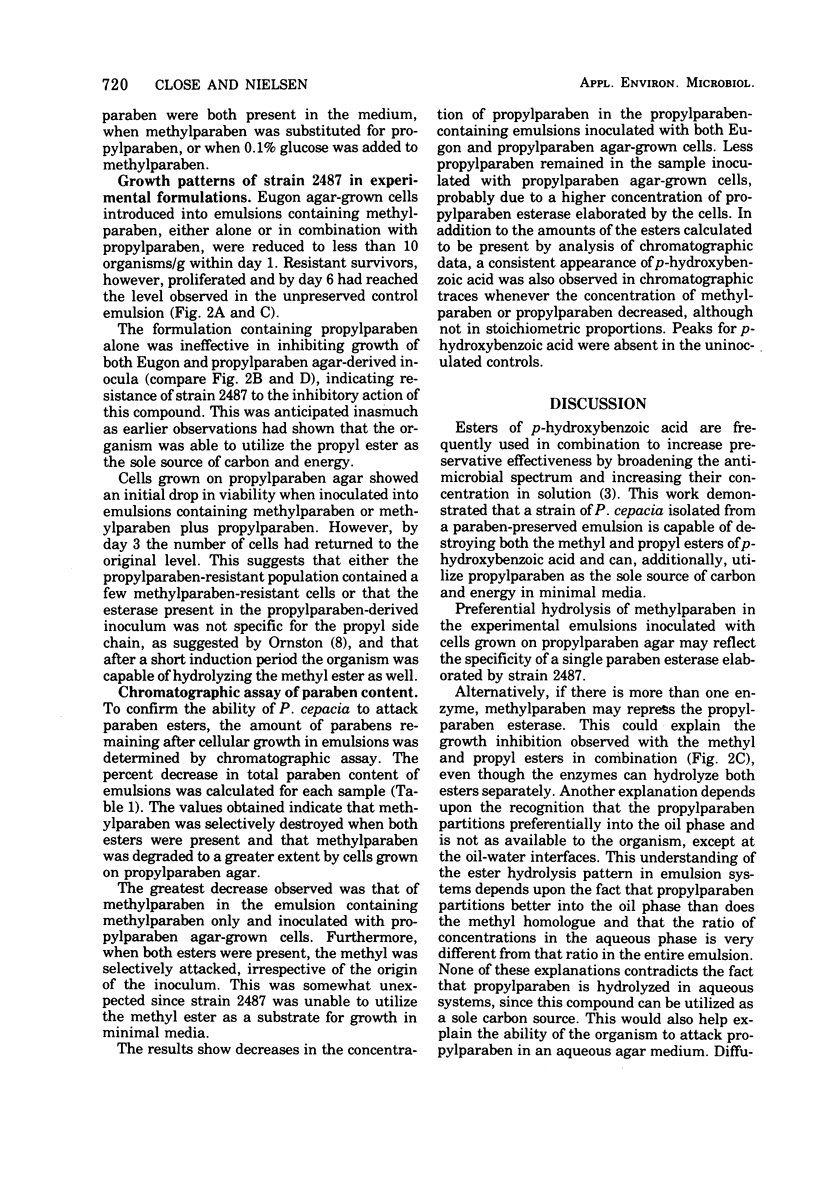
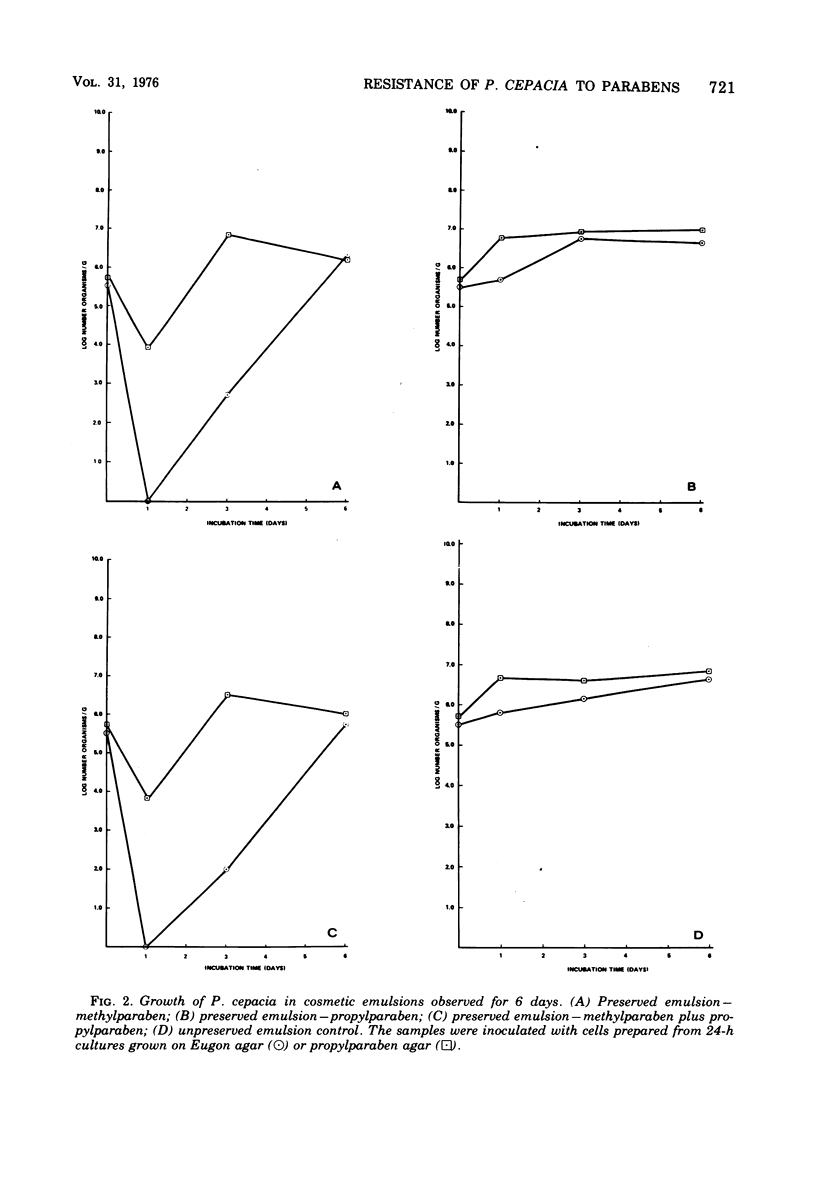
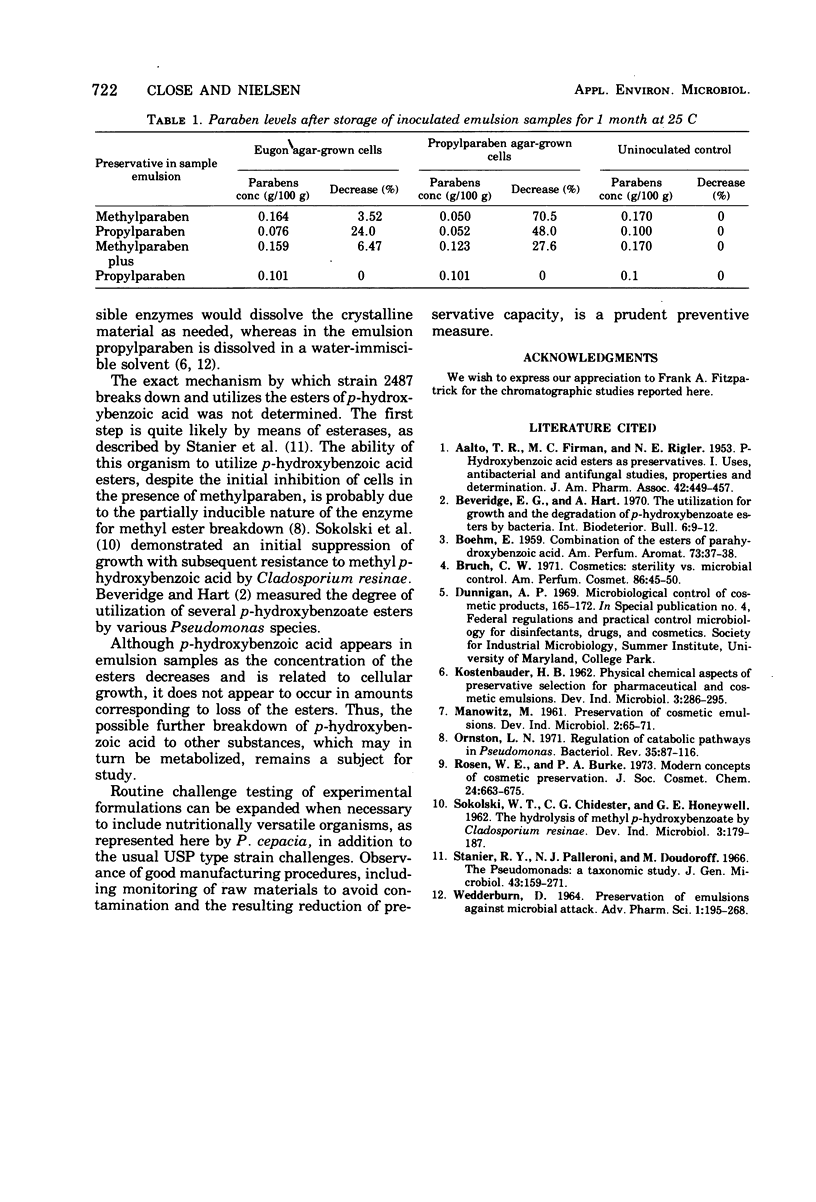
Images in this article
Selected References
These references are in PubMed. This may not be the complete list of references from this article.
- AALTO T. R., FIRMAN M. C., RIGLER N. E. p-Hydroxybenzoic acid esters as preservatives. I. Uses, antibacterial and antifungal studies, properties and determination. J Am Pharm Assoc Am Pharm Assoc. 1953 Aug;42(8):449–457. [PubMed] [Google Scholar]
- Ornston L. N. Regulation of catabolic pathways in Pseudomonas. Bacteriol Rev. 1971 Jun;35(2):87–116. doi: 10.1128/br.35.2.87-116.1971. [DOI] [PMC free article] [PubMed] [Google Scholar]
- Stanier R. Y., Palleroni N. J., Doudoroff M. The aerobic pseudomonads: a taxonomic study. J Gen Microbiol. 1966 May;43(2):159–271. doi: 10.1099/00221287-43-2-159. [DOI] [PubMed] [Google Scholar]
- Wedderburn D. L. Preservation of emulsions against microbial attack. Adv Pharm Sci. 1964;1:195–268. [PubMed] [Google Scholar]



